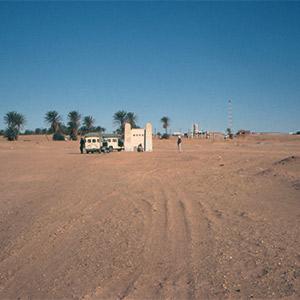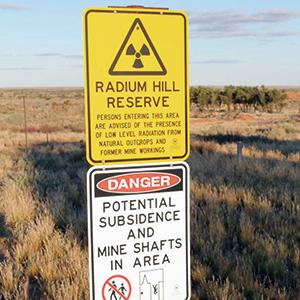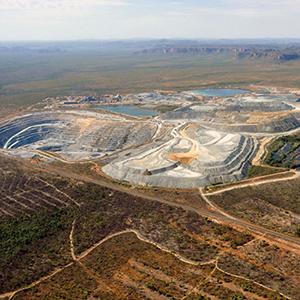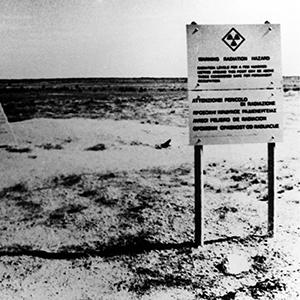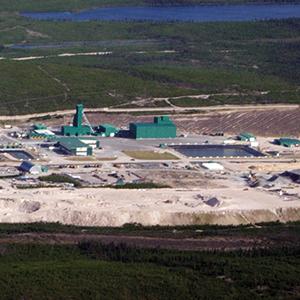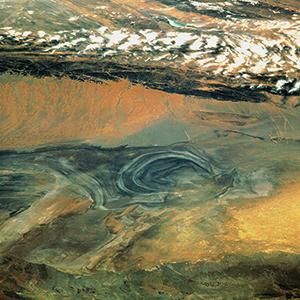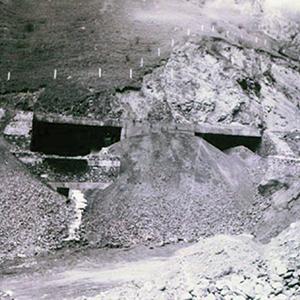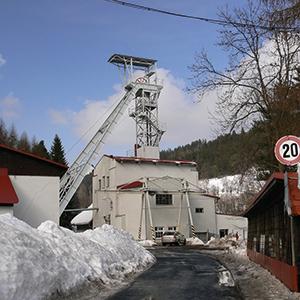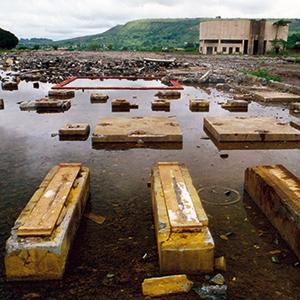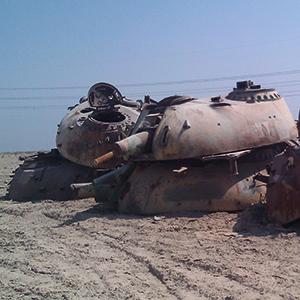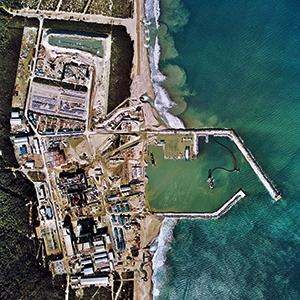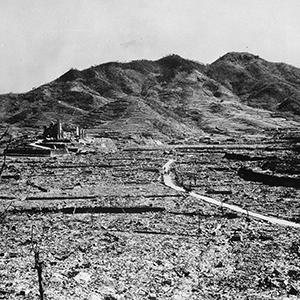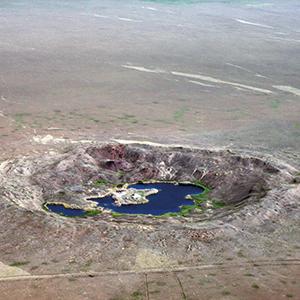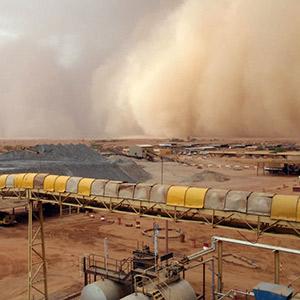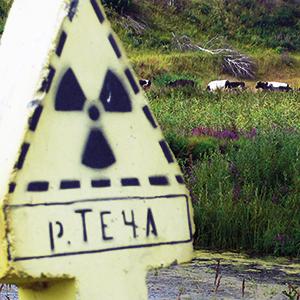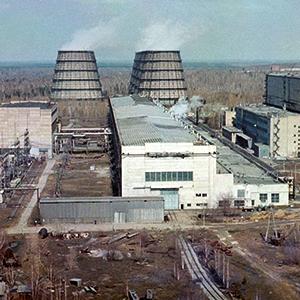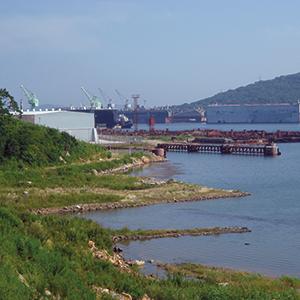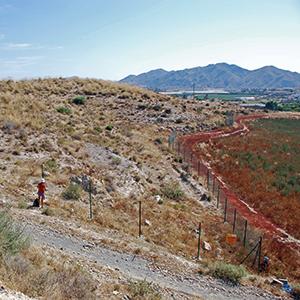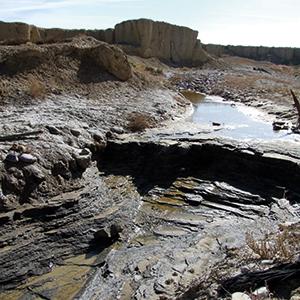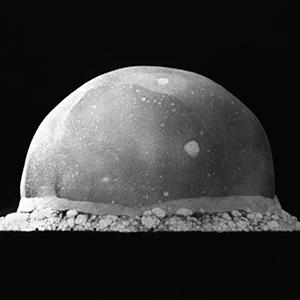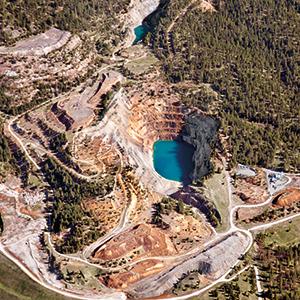Elliot Lake, Canada

As a lasting legacy of the “golden age” of uranium mining, the radioactive tailings of Elliot Lake pose a threat to the environment of the Great Lakes region and the health of its inhabitants. Many hundreds of miners have already succumbed to the long-term effects of radiation exposure and tens of thousands more deaths are expected as a result of radioactive pollution in the coming decades.
Photo: Uranium mining left a legacy of environmental catastrophes: increased concentrations of radon gas, massive tailings heaps and the contamination of ground and surface water with radioactive particles, arsenic and heavy metals.
Credit: Simon Evans / creativecommons.org/licenses/by-nc-nd/2.0
History
In 1954, uranium was discovered near Elliot Lake in the Canadian province of Ontario. With the U.S. nuclear weapons program in dire need of fissile material, it was the time of the great “uranium rush.” A few years later, two companies, Denison Mines and Rio Algom, began to operate 12 mines and processing mills in the region. Elliot Lake quickly became “the uranium capital of the world.” In the 1970s, uranium miners in Elliot Lake became alarmed at the high incidence of lung cancer and silicosis and went on strike. The Ontario government appointed a commission to investigate the health effects of radiation on uranium miners in Elliot Lake. German and Czechoslovakian studies had established a connection between radon gas inhalation and lung cancer in uranium miners decades ago (see the corresponding posters in this exhibition). Similar studies by the the Canadian commission found that the Elliot Lake miners cohort had twice as many cases of lung cancer as the control group (81 observed lung cancer deaths versus 45 expected). The commission made several recommendations regarding safety standards and concluded that “from the occupational health point of view, it is certain that exposure to radon daughters leads to an increased risk of lung cancer for the working force as a whole.” As a result of this evidence, the Steel Workers Union of America warned miners against working in Elliot Lake’s mines. The union’s environmental representative, Paul Falkowski stated in 1976: “If anybody does not like to go to the hospital with lung cancer, he should have a very close look at the Elliot Lake situation before he signs on.”
Health and environmental effects
Eventually, even the British Columbia Medical Association (BCMA) began to warn of a “gradually flowering crop of radiation-induced cancers” among uranium miners. Their studies found that by 1984, a total of 274 uranium miners had already died of lung cancer. A British study found a threefold increase in the risk of cancer among uranium miners.
Soon it became clear that the region’s entire population – not only miners – had been exposed to increased levels of radiation. Large quantities of radioactive waste rock and tailings remained from the milling process. This refuse still contains 85 % of the original radioactivity in the form of uranium progeny such as thorium-230 or radium-226 and gives off at least 10,000 times as much radon gas as the undisturbed ore.
A company specialized in radioactive waste management calculated in 1992 that the radon gas released through uranium mining in Elliot Lake would cause an effective collective dose of 10 million Person-Sievert. Over the course of a thousand years, the radon gas alone would therefore be responsible for 2,300 to 26,000 deadly cases of cancer, although this number could well increase by a factor of 1,000 through erosion and other environmental influences. Aquatic and airborne releases from the uranium tailings are expected to cause an additional 1,600 to 24,400 cancer deaths over a 1,000-year period in the region. Not accounted for in these calculations are accidental spills, such as the two million liters of tailings from the Stanleigh uranium mine that polluted Elliot lake in August 1993. Regardless of how many cancers are eventually caused by radioactive pollution from uranium mining, every single case constitutes a calamity for the affected person and his or her family. Every case of cancer that is caused by the nuclear industry is one too many.
Adding to this already worrying development, radioactive waste rock was used in the construction of homes in Elliot Lake well into the 1970s. Acceptable levels of radon contamination were exceeded about 20 times. Studies by the Elliot Lake Environmental Assessment Board demonstrated that indoor radon levels would result in a 30 % rise in the incidence of lung cancer. As a result, the city had to react and began installing fans under floorboards in order to blow radon gas out of the houses.
The BCMA condemned the negligence in the construction of houses from radioactive waste as “tantamount to allowing an industrially induced epidemic of cancer.” A 1982 report published by the Canadian Atomic Energy Control Board estimated a 40 % increase in lung cancer for inhabitants of contaminated houses.
Outlook
In the early 1990s, the Ontario uranium mines were decommissioned due to economic pressure from the Saskatchewan mines and the decision of the U.S. Atomic Energy Commission to purchase uranium for its nuclear programs from U.S. sources only. The town of Elliot Lake fell into decay and many moved away. Those who stayed continue to suffer from decades of occupational radiation exposure, contamination of soil, water and air through mine waste and uranium tailings, and high concentrations of residential radon. Meaningful epidemiological research has not been done to this day. The people of Elliot Lake have become Hibakusha, developing cancer and other radiation-induced diseases because their health was considered less important than cheap uranium for nuclear weapons and power plants.
References
- Young et al. “Health Dangers of Uranium Mining and Jurisdictional Questions.” Environmental Health Committee of the British Columbia Medical Association, August 1980. www.ccnr.org/bcma.html
- Falkowski P. Speech from June 1976. www.republicofmining.com/category/elliot-lake/
- Kusiak et al. “Mortality from lung cancer in Ontario uranium miners.” Br J Ind Med 1993;50:920-928. www.ncbi.nlm.nih.gov/pmc/articles/PMC1035522/
- Leigh et al. “Impacts of Elliot Lake Mill Tailing.” Radioactive Waste Management Associates (RWMA), New York, March 30, 1992. www.wise-uranium.org/udeli.html
- Edwards G. “Uranium: The Deadliest Metal.” Canadian Coalition for Nuclear Responsibility (CCNR), 1992. www.ccnr.org/uranium_deadliest.html
- Dewar et al. “Uranium mining and health.” Can Fam Physician. 2013 May; 59(5): 469-471. www.ncbi.nlm.nih.gov/pmc/articles/PMC3653646/







